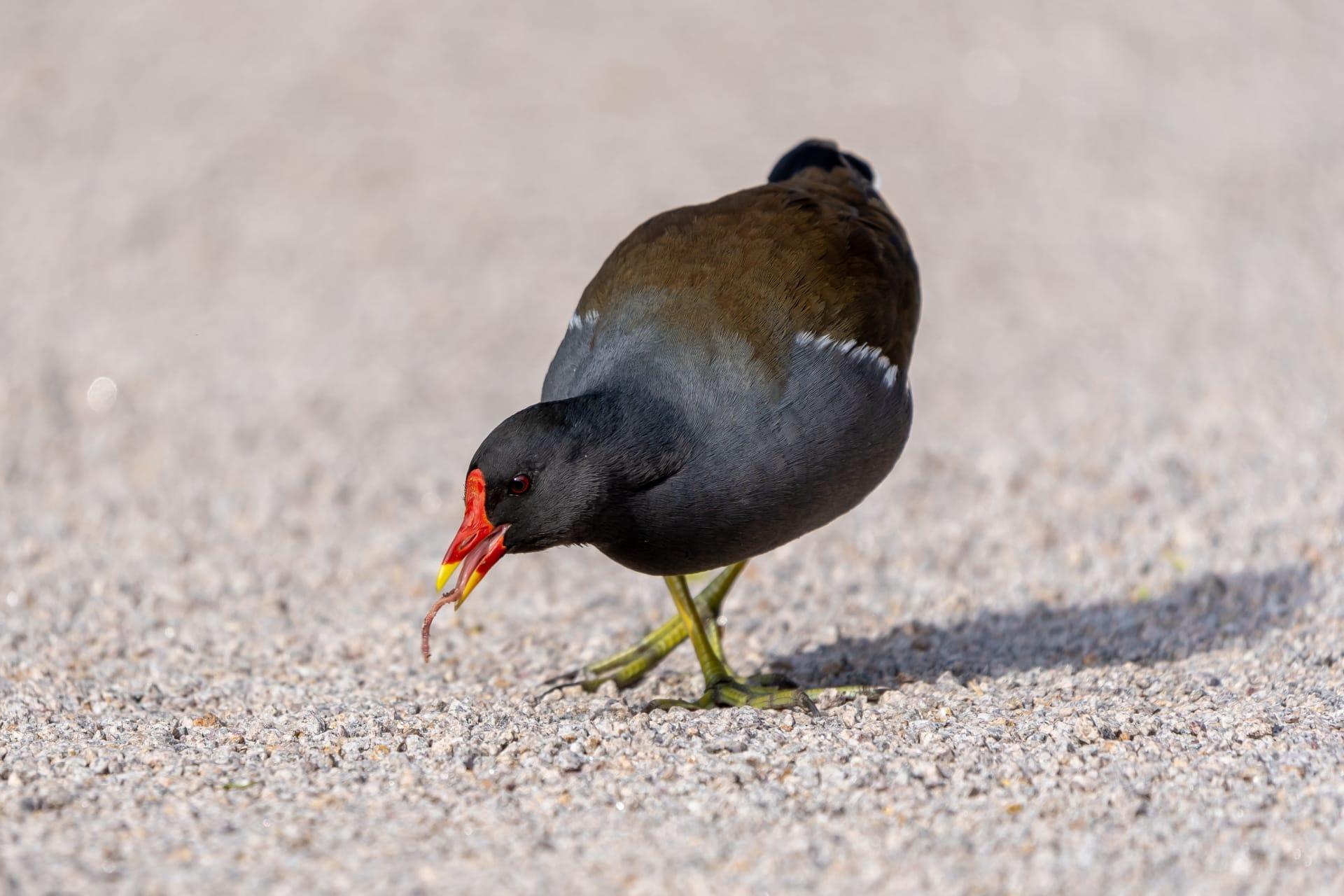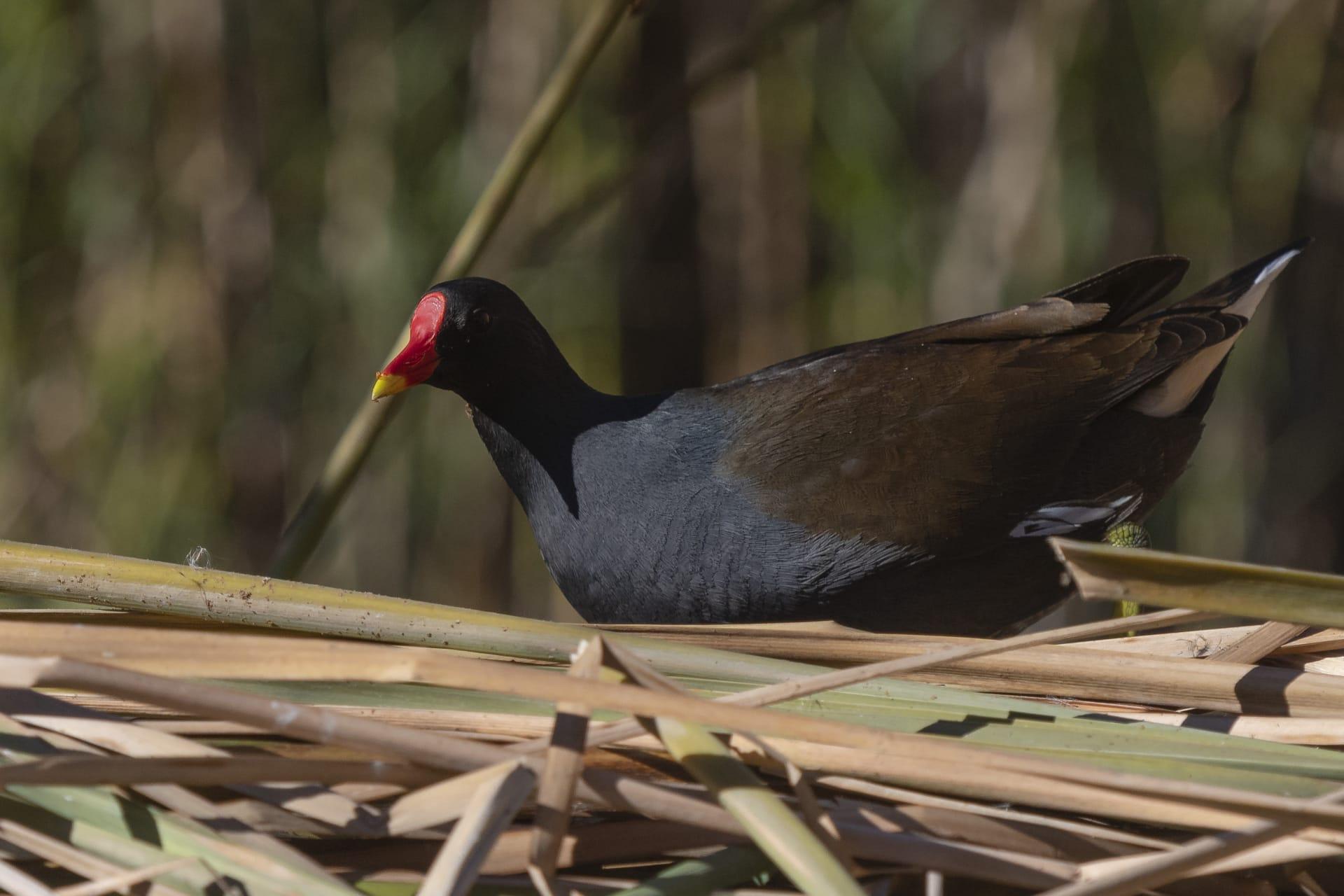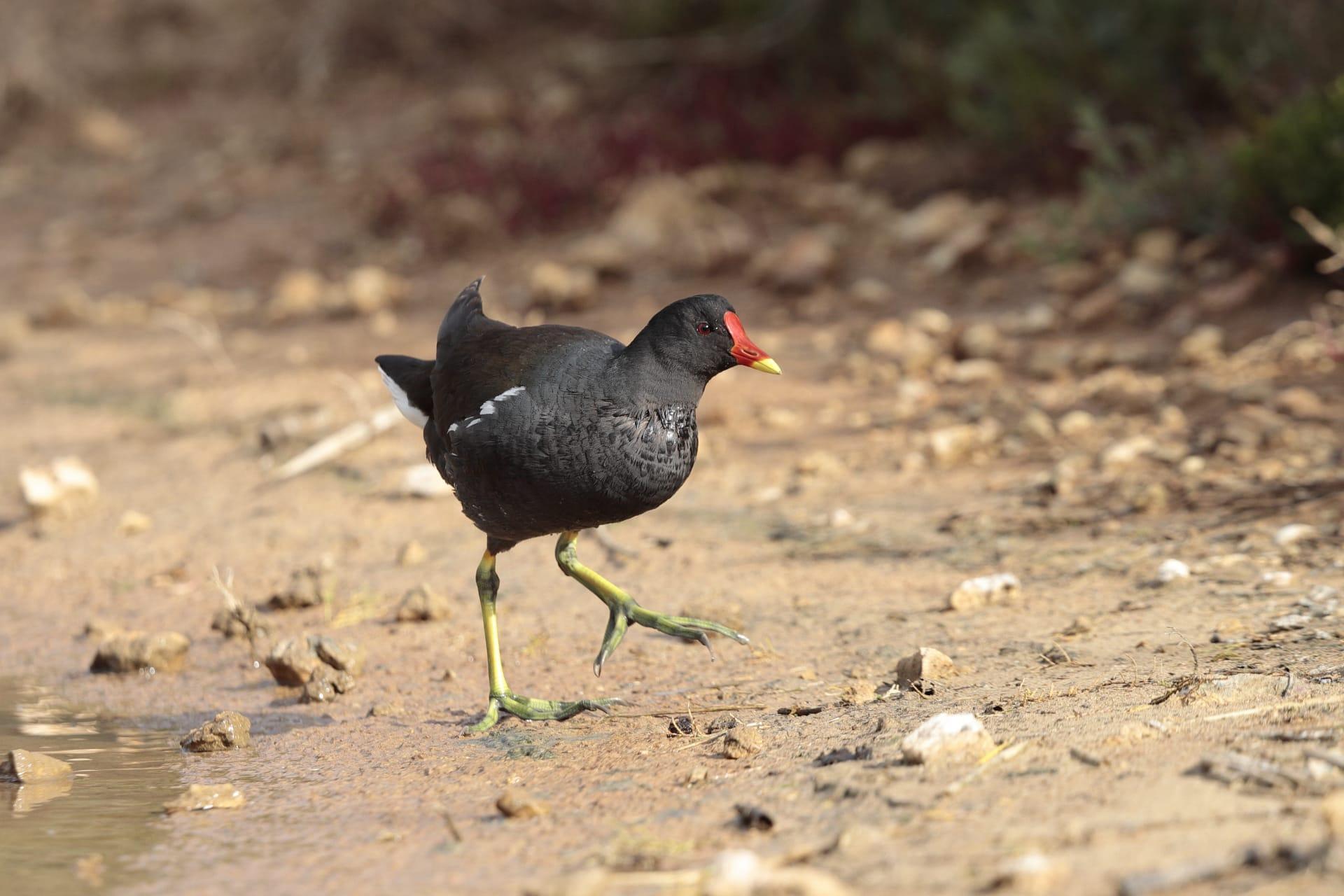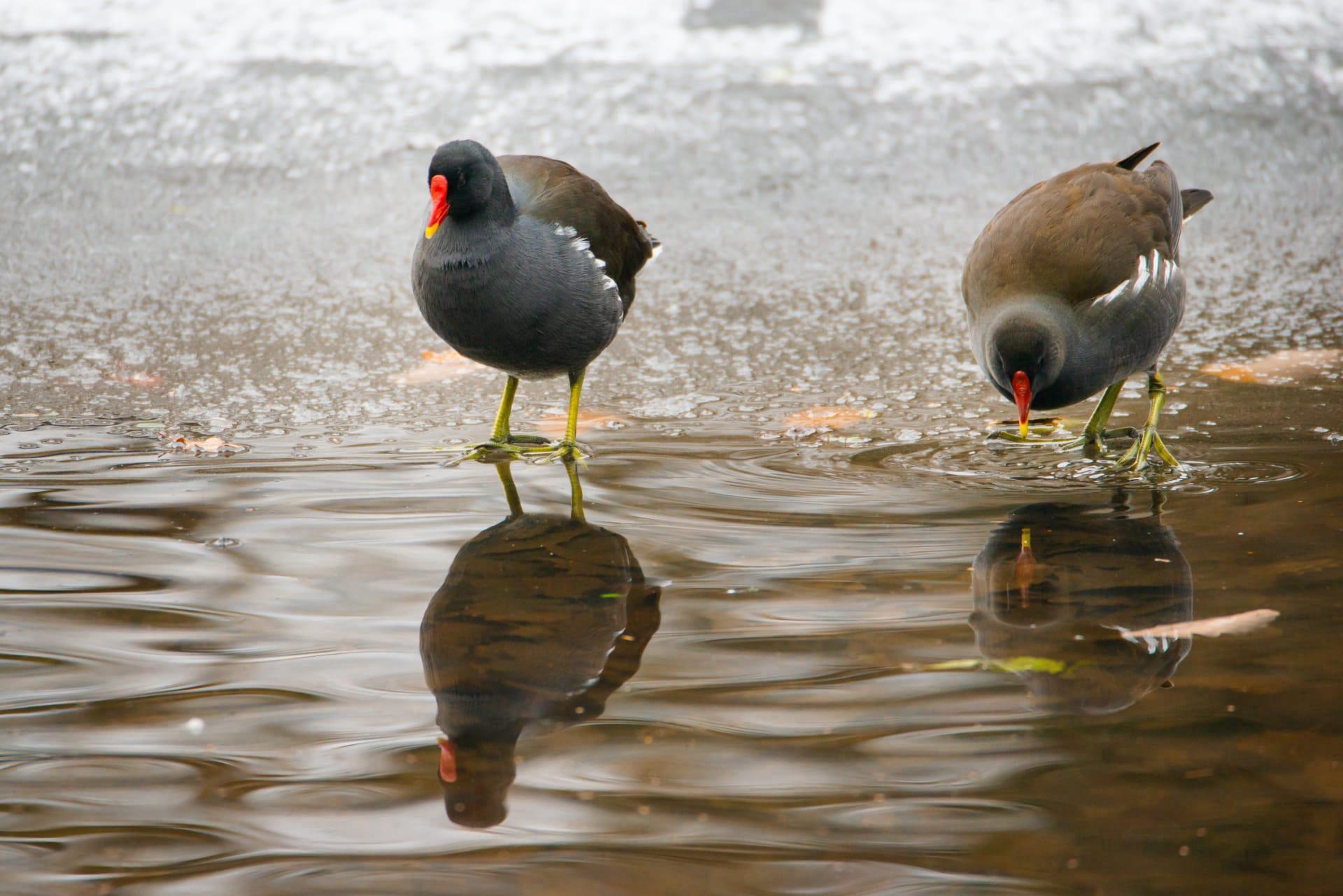Moorhen
- Home /
- Mini Encyclopedia /
- Animal /
- Moorhen
1
The Moorhen, scientifically known as Gallinula chloropus, is a bird belonging to the Rallidae family. This family is notable for its diverse species that inhabit various wetland environments. The Moorhen stands out with its distinctive plumage, characterized by a blackish body, a red frontal shield, and a white line along its flanks. Its bill is mainly red with a yellow tip. These birds are relatively small, measuring about 10 to 14 inches in length and weighing between 250 and 400 grams. Moorhens have adapted well to their aquatic habitats, with long toes that facilitate walking on soft, uneven surfaces like floating vegetation.
Moorhens are widely distributed across temperate and tropical regions of the world. They are common in Europe, Asia, Africa, and the Americas. These birds are highly adaptable and can be found in a range of wetland habitats, including marshes, rivers, ponds, and city park lakes. They tend to avoid very dry or arid areas. In colder regions, Moorhens are migratory, traveling to warmer climates during winter. Their population is estimated to be several million globally, indicating their successful adaptation and widespread distribution.

2
Question: Is it true that Moorhens can't fly and are limited to swimming and walking?
Answer: This is a common misconception. In reality, Moorhens are capable flyers, though they are more often seen walking or swimming. They have strong legs and long toes, perfect for navigating through marshes and floating vegetation. When it comes to flying, Moorhens have a distinctive style. They typically fly low over the water with rapid wing beats and dangling legs. They are also known for short-distance flights, preferring to stay close to their aquatic habitats. This flying ability plays a crucial role in escaping predators and migrating in response to seasonal changes.

3
Moorhens employ a variety of strategies to survive in their aquatic environments. One key strategy is their omnivorous diet, which includes insects, snails, seeds, and plant matter. This diverse diet allows them to thrive in different types of wetlands. Their foraging behavior is flexible, ranging from pecking at the water's surface to diving for food. Moorhens are also known for their secretive nature, often hiding in dense vegetation to avoid predators. They have a sharp call, which they use for communication, especially in dense cover where visibility is limited.
Reproduction is another vital aspect of their survival strategy. Moorhens are monogamous and often breed in colonies. They build nests in dense vegetation close to the water's surface. A typical clutch contains about 5 to 8 eggs. Both parents participate in incubating the eggs and feeding the chicks. This cooperative breeding strategy increases the survival chances of their offspring. The chicks are precocial, meaning they are relatively mature and mobile from the moment of hatching, which is crucial for their survival in the dynamic wetland environment.

4
In the ecosystem, Moorhens play several roles that contribute to environmental balance. As omnivores, they help control insect populations, which can be crucial in maintaining the health of wetlands. Their diet also includes plant matter, contributing to the regulation of vegetation growth. This feeding behavior aids in the maintenance of open water spaces, which are essential for various aquatic species.
Moorhens also serve as prey for a range of predators, including foxes, large birds, and snakes. Their role as prey helps regulate their population and supports the food chain in their habitat. Furthermore, Moorhens are indicators of healthy wetland ecosystems. Their presence and population status can reflect the overall health of the wetland, as they require specific conditions to thrive, such as clean water and abundant vegetation.

5
Film: "The Secret Life of the Moorhen" (United Kingdom, 2017) offers an intimate look into the daily activities of Moorhens in a typical British wetland. The documentary, produced by the BBC, highlights their adaptive behaviors, social interactions, and the challenges they face in their habitat. It provides stunning visuals of their feeding, nesting, and defensive tactics against predators.
Book: "Wetland Birds: Habitat Resources and Conservation Implications" (United Kingdom, 1999) by Milton Weller includes a comprehensive section on Moorhens. The book delves into their habitat requirements, feeding habits, and reproductive strategies, offering insights into how these birds fit into the broader context of wetland conservation.
Book: "Birds of Wetlands and Waterways" (United States, 2005) by Michael King features a detailed chapter on the Moorhen. It explores their ecological role in wetland environments, their adaptation strategies, and the impact of human activities on their populations. The book combines scientific research with vivid photographs, making it accessible to both bird enthusiasts and conservationists.